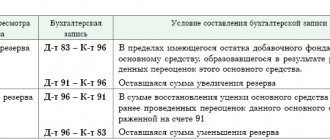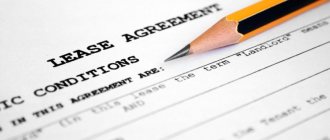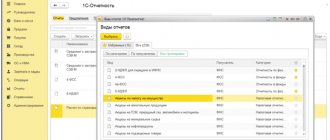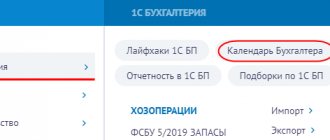How to account for property that is in gratuitous use?
28.06.2018
Question:
A municipal government agency has a car for free use (listed in off-balance sheet account 01). How is this object accounted for in connection with the entry into force of the GHS “Rent”? Does it need to be transferred from the balance sheet to the institution’s balance sheet?
Answer:
From 01/01/2018, when reflecting transactions for the receipt (transfer) of property for free use, one should be guided by the GHS “Rent”, GHS “Fixed Assets”
and
GHS Conceptual Framework
.
According to clause 8
of the GHS “Rent”
, accounting objects arising during the transfer of state (municipal) property for free use are classified as lease accounting objects.
For accounting purposes, such objects are classified as either operating lease accounting objects or non-operating (financial) lease accounting objects - depending on the expected period of use of the property in relation to the remaining useful life of the transferred object, the amount of lease payments in relation to the fair value of the object accounting for rent and compliance with other conditions provided for in clauses 12 – 14 of the GHS “Rent”
.
Note:
accounting objects that arise when state (municipal) property is assigned with the right of operational management to institutions in order to fulfill their assigned powers (functions) are not classified as lease accounting objects (
clause 10 of the GHS “Rent”
).
Note that the classification of lease accounting objects is carried out by assessing the contractual terms of use of the property and its maintenance.
For example, by virtue of the provisions of the GHS “Rent”, when concluding a gratuitous unlimited
using a car, a non-operating (financial) lease relationship arises (see
letters of the Ministry of Finance of the Russian Federation dated December 15, 2017 No. 02-07-07/84237
and
dated November 30, 2017 No. 02-07-07/79257
).
A car received by an institution under a free use agreement concluded for a certain period
can be accounted for as an operating lease.
That is, taking into account the provisions of the GHS “Lease”, it is important to correctly classify lease accounting objects, dividing them into operating and financial leases, since such objects are taken into account in budget accounting differently.
For your information:
In order to transition to the application of the GHS “Rent”, we recommend using the guidelines (recommendations) of the Ministry of Finance, communicated by
letters dated December 13, 2017 No. 02-07-07/83463
and
No. 02-07-07/83464
.
Before the application of the GHS “Rent”, a car received by an institution for free use should have been accounted for in off-balance sheet account 01
“Property in use” at the cost indicated (determined) by the transferring party (owner), or in a conditional valuation: one object - 1 rub. (if this is established by the accounting policy).
From 01/01/2018, a car, depending on whether it belongs to an operating or financial lease, must be taken into account in the accounts
budget accounting
1 111 45 000
“Rights to use vehicles”,
1 101 35 000
“Vehicles - other movable property of the institution”, respectively (
clause 5
,
41.1 of Instruction No. 162n
).
The specified object should be reflected on the balance sheet at its fair value, determined as of the date of its classification using the market price method, as if the right to use the property had been granted on commercial (market) terms (hereinafter referred to as the fair value of lease payments) ( clause 26 of the GHS “Rent”
,
Letter of the Ministry of Finance of the Russian Federation dated 05/08/2018 No. 02-07-08/30805
).
The difference between the amount of lease payments and the amount of fair value of lease payments is recognized as deferred income (deferred income) from the provision of the right to use the asset ( clause 27.1
,
28.1 GHS “Rent”
).
During the period of use of the property, deferred income from granting the right to use the asset, as well as depreciation on the recorded right to use the asset (for an operating lease) or fixed asset (for a finance lease) are recognized evenly (monthly) as part of the financial result of the current period ( clause 27.1
,
28.2 GHS “Rent”
).
To switch to the use of the GHS “Rent” in the situation under consideration, we recommend:
– conduct an inventory of property in order to identify the actual availability of a car received for free use under an agreement concluded before January 1, 2022; – determine the remaining useful life of the car (the remaining period of use of the object or the remaining period of its redemption, if it is a financial lease object); – determine the amount of monthly lease payments, calculated based on the fair (market) value of the object, for the remaining useful life of the vehicle (starting from 2022 until the end of the period of use of the object); – generate an accounting certificate (form 0504833) to reflect in the inter-reporting period (as of January 1, 2022) the opening balances for the lease accounting object.
In view of the above and based on the provisions of clause 7
,
19
,
41.1
,
120
,
123 of Instruction No. 162n
in the budget accounting of a government institution, the following accounting entries must be generated:
1. During the inter-reporting period:
| Contents of operation | Debit | Credit |
| An object (car) that is in gratuitous use is written off from off-balance sheet accounting | Off-balance sheet account 01 | |
| Operating lease | ||
| Accepted the right to use a car – the object of an operating lease | 1 111 45 350 1 401 30 000 | 1 401 30 000 1 401 40 182 |
| Finance lease | ||
| A car – an object of financial lease – has been registered | 1 101 35 310 1 401 30 000 | 1 401 30 000 1 401 40 182 |
2. Monthly during the remaining useful life of the vehicle:
| Contents of operation | Debit | Credit |
| Revenues of the current financial year are recognized in the amount of the monthly lease payment, calculated based on the fair (market) value of the car | 1 401 40 182 | 1 401 10 182 |
| Operating lease | ||
| Depreciation has been calculated on the registered right to use the car | 1 109 x0 224 1 401 20 224 | 1 104 45 450 |
| Finance lease | ||
| Depreciation has been accrued on a car – an object of financial lease | 1 109 x0 271 1 401 20 271 | 1 104 35 411 |
Mishanina M., expert of the information and reference system "Ayudar Info"
Send to a friend
Registration of a fixed asset received free of charge
Let's consider the procedure for accepting for accounting accounting fixed assets received from commercial organizations and individuals as gifts or donations.
In order to take into account a fixed asset that was received by an institution free of charge, it is necessary to determine its value.
Determining the value of a fixed asset. According to clause 25 of Instruction No. 157n for accounting, fixed assets received free of charge are accepted at their original cost. It is formed from its current market value on the date of acceptance for accounting and the cost of services associated with its delivery, registration and bringing it into a condition suitable for use.
The market value of fixed assets is the amount of money that can be received as a result of the sale of fixed assets on the date of acceptance for accounting; it must be documented or determined by expert means. You can confirm the market price with the following information:
- from Rosstat;
– about market prices published in the media;
– on prices for similar products received in writing from manufacturers;
– about prices based on the opinions of experts (appraisers).
The determination of market value is carried out by a commission established in the institution on a permanent basis for the receipt and disposal of assets.
Acceptance of fixed assets for accounting. Objects of fixed assets are accepted for accounting at their original cost, formed upon gratuitous receipt. The basis for their registration is the act of acceptance and transfer of fixed assets.
An institution that accepts a fixed asset as a donation, for the use of which a specific purpose has been established, must keep separate records of all operations on the use of this fixed asset ( clause 3 of Article 582 of the Civil Code of the Russian Federation ).
A computer (other movable property) was transferred to an autonomous institution within the framework of a donation agreement from an individual. Based on the completed acceptance certificate, the computer was accepted for accounting. The institution's commission for the receipt and disposal of assets determined the cost of the computer in the amount of 20,000 rubles.
In accounting, this operation will be reflected in the following entry:
| Contents of operation | Debit | Credit | Amount, rub. |
| Computer accepted for accounting | 2 101 34 000 | 2 401 10 180 | 20 000 |
To form the initial cost of an object received under several contracts,
account 106 xx 000 “Investments in non-financial assets” is used.
Equipment (other movable property) was transferred to the autonomous institution as part of the donation agreement. The commission on receipt and disposal of assets determined its market value - 60,000 rubles. The institution used the services of a transport organization to deliver the equipment. The cost of services is 5,000 rubles. Based on the completed transfer and acceptance certificate, the equipment was accepted for accounting at the generated initial cost.
In accounting, these transactions will be reflected in the following correspondence of accounts:
| Contents of operation | Debit | Credit | Amount, rub. |
| The initial cost of the equipment was formed: | |||
| – market value of equipment | 2 106 31 000 | 2 401 10 180 | 60 000 |
| – cost of transport organization services | 2 106 31 000 | 2 302 26 000 | 5 000 |
| Equipment was accepted for accounting at the generated initial cost | 2 101 34 000 | 2 106 31 000 | 65 000 |
| Payment has been made for the services of the transport organization | 2 302 26 000 | 2 201 11 000 | 5 000 |
Depreciation of fixed assets. Instruction No. 157n does not contain any specifics for calculating depreciation on fixed assets received free of charge from commercial organizations or individuals.
Therefore, to calculate the depreciation rate, you need to be guided by its general rules. First of all, the commission for the receipt and disposal of assets should determine the useful life based on:
a) Classification of fixed assets included in depreciation groups , approved by Decree of the Government of the Russian Federation of January 1, 2002 No. 1 ;
b) recommendations contained in the manufacturer’s documents included in the package of the property, in the absence of norms in the legislation of the Russian Federation establishing the useful life of the property for the purpose of calculating depreciation, in cases of lack of information in the legislation of the Russian Federation and in the manufacturer’s documents - based on the decision of the institution’s commission on receipt and disposal of assets, taken into account:
– the expected period of use of this object in accordance with the expected productivity or capacity;
– expected physical wear and tear, depending on the operating mode, natural conditions and the influence of an aggressive environment, and the repair system;
– regulatory and other restrictions on the use of this object;
– warranty period for use of the object.
When an institution receives an object of fixed assets that was previously in operation, the end date of its useful life must be determined in the specified order, but taking into account the period of actual operation of this object. That is, the maximum period provided for the corresponding depreciation group should be reduced by the number of years (months) during which this object was already operated by the previous owners ( clause 44 of Instruction No. 157n ).
Clause 92 of Instruction No. 157n defines the procedure for calculating depreciation. When assigning fixed assets received free of charge to one type or another, depreciation should be calculated as follows:
a) on an object of real estate when accepting it for accounting upon the fact of state registration of rights to objects of real estate, provided for by the legislation of the Russian Federation:
– cost up to 40,000 rubles. inclusive – in the amount of 100% of the book value of the object upon acceptance for accounting;
– costing over 40,000 rubles. – in accordance with depreciation rates calculated in accordance with the established procedure;
b) for movable property, with the exception of the library collection:
– costing from 3,000 to 40,000 rubles. inclusive - in the amount of 100% of the book value when the facility is put into operation;
– costing over 40,000 rubles. – in accordance with depreciation rates calculated in accordance with the established procedure;
c) for objects of the library fund:
– cost up to 40,000 rubles. inclusive - in the amount of 100% of the book value when the facility is put into operation;
– costing over 40,000 rubles. – in accordance with the depreciation rates calculated in accordance with the established procedure.
For movable property, with the exception of library collections, worth up to 3,000 rubles. inclusive, no depreciation is charged.
The annual depreciation amount is calculated using the linear method based on the book value of the fixed asset and the depreciation rate calculated based on its useful life ( clause 85 of Instruction No. 157n ). During the financial year, depreciation is calculated monthly at 1/12 of the annual amount.
In accounting, the amount of accrued depreciation is reflected by the entry:
| Contents of operation | Debit | Credit |
| Depreciation accrued | 2 109 xx 271 2 401 20 271 | 2 104 xx 000 |
In addition to the free receipt of fixed assets from commercial organizations and individuals, fixed assets can be received by an institution free of charge from authorities, state (municipal) institutions with the right of operational management.
In this case, the received fixed asset item is accepted for accounting at book value while simultaneously reflecting the amount of previously accrued depreciation ( clause 27 of Instruction No. 183n ). The transferring party indicates information about the cost and accrued depreciation in the notice (f. 0504805) and the act of acceptance and transfer of fixed assets.
The institution determines the useful life of the received fixed asset taking into account the period of its actual operation ( clause 44 of Instruction No. 157n ). The receiving party makes further depreciation calculations in the generally established manner.
The Letter of the Ministry of Finance of the Russian Federation dated September 18, 2012 No. 020607/3798 contains the correspondence of accounts, which should reflect the receipt of fixed assets by the institution from the founder and settlements with him.
| Contents of operation | Debit | Credit |
| The following fixed assets received from the founder are accepted for accounting: | ||
| – amount of book value | 4 101 xx 000 | 4 401 10 180 |
| – amount of accrued depreciation | 4 401 10 180 | 4 104 xx 000 |
| Settlements with the founder for the amount of the book value of the fixed asset are reflected | 4 401 10 172 | 4 210 06 000 |
| Depreciation has been calculated on fixed assets during the period of their operation. | 4 109 xx 271 4 401 20 271 | 4 104 xx 000 |
The founder transferred a bus (particularly valuable movable property) with a book value of 900,000 rubles to the autonomous institution.
and accrued depreciation of 300,000 rubles. The bus was registered on the basis of the acceptance certificate. It will be used in carrying out the main activities of the institution. During the year, equipment (particularly valuable movable property) with a book value of RUB 120,000 was written off. and with 100% accrued depreciation, purchased with subsidy funds. In accounting, these transactions will be reflected in the following correspondence of accounts:
| Contents of operation | Debit | Credit | Amount, rub. |
| The following fixed assets received from the founder are accepted for accounting: | |||
| – amount of book value | 4 101 25 000 | 4 401 10 180 | 900 000 |
| – amount of accrued depreciation | 4 401 10 180 | 4 104 25 000 | 300 000 |
| The accrued amount of depreciation on written-off equipment is written off | 4 104 24 000 | 4 101 24 000 | 120 000 |
| Settlements with the founder when preparing the annual report are reflected (900,000,120,000) rubles. | 4 401 10 172 | 4 210 06 000 | 780 000 |
The receipt of a fixed asset from another government body or state (municipal) institution should be reflected in the accounting records with the following entry:
| Contents of operation | Debit | Credit |
| The following fixed assets are accepted for accounting: | ||
| – amount of book value | 2 101 xx 000 | 2 401 10 180 |
| – amount of accrued depreciation | 2 401 10 180 | 2 104 xx 000 |
In addition, fixed assets can come free of charge from supranational organizations and foreign governments, international financial organizations. Such receipt of fixed assets is reflected in accounting by the following correspondence of accounts:
| Contents of operation | Debit | Credit |
| Receipt of fixed assets from supranational organizations and foreign governments | ||
| The fixed asset was accepted for accounting at the initial cost formed upon gratuitous receipt | 2 101 xx 000 | 2 401 10 152 |
| Receipt of fixed assets from international financial organizations | ||
| The fixed asset was accepted for accounting at the initial cost formed upon gratuitous receipt | 2 101 xx 000 | 2 401 10 153 |
Transfer of property within the public sector: accounting options
Current regulatory legal acts do not establish a detailed procedure for organizing accounting when accepting and transferring non-financial assets between public sector organizations. Therefore, in practice, such operations raise many questions and problems.
Let's consider the options for decisions that an institution can make based on the conditions under which the property is transferred.
Free admission
The procedure for reflecting in the accounting records of budgetary (autonomous) institutions transactions on the gratuitous receipt of non-financial assets from various public sector organizations depends solely on the category of incoming property.
The value of non-financial assets that institutions do not have the right to dispose of independently (real estate and especially valuable movable property) is credited to account 4,210,06,000 “Settlements with the founder.” When other property is received, its value is taken into account as an increase in the financial result on the credit of account 4(2) 401 10 180 “Other income”. If depreciation was accrued on incoming objects, the corresponding amounts should be reflected in the debit of accounts 4 210 06 000, 4(2) 401 10 180.
The applied accounting methodology assumes that movable property upon its receipt should immediately be classified as either particularly valuable or otherwise.
Current legislation does not contain restrictions for classifying movable property acquired with funds from income-generating activities as particularly valuable (letter of the Ministry of Finance of Russia dated November 18, 2011 No. 02-03-10/5026).
Lists of especially valuable movable property of institutions are determined by their founders (clause 12 of article 9.2 of the Federal Law of January 12, 1996 No. 7-FZ “On Non-Profit Organizations”, hereinafter referred to as Law No. 7-FZ; part 3.1 of Article 3 of the Federal Law of 03.11 .2006 No. 174-FZ “On Autonomous Institutions”, hereinafter referred to as Law No. 174-FZ).
Thus, until movable property is included in the appropriate list in the prescribed manner, the institution has no formal grounds for recording received objects in analytical group 20 “Especially valuable movable property of the institution.”
Accordingly, if on the day the right of operational management to the received movable property arises, the institution does not have the founder’s decision to include it in the composition of especially valuable property, the accounting reflects the receipt of other movable property and the transferred amounts of depreciation accrued on it in correspondence with account 4(2) 401 10 180.
After receipt of documents confirming the inclusion by the founder of certain objects in the composition of especially valuable movable property, the change in the category of property is reflected in the debit and credit of account 100 00 “Non-financial assets” in the context of the corresponding analytical accounts:
- transfer of fixed assets at book value
Debit 410120 310
Credit 410130 310;
- transfer of accrued depreciation amount
Debit 4,104 30,410
Credit 4,104 20,410.
At the same time, the residual value of the property can be recorded as the debit of account 4,401 10,180 and the credit of account 4,210,06,000.
For correspondence of accounts in relation to property received as part of activities to fulfill state (municipal) tasks, as well as within the framework of income-generating activities, see the full version of the article.
Free transfer
When transferring property to any public sector organization, a budgetary (autonomous) institution must:
- obtain from the founder documents confirming the approval of the property transfer operation (if real estate and especially valuable movable property are being transferred);
- agree with the receiving party on the very possibility of the transfer, as well as its timing.
Property can be transferred by an institution not on its own initiative, but in accordance with the plan (order) of the authorized government body exercising the rights of the owner to allocate property to public sector organizations.
The procedure for reflecting in the accounting records of a budgetary (autonomous) institution transactions on the gratuitous transfer of non-financial assets to various public sector organizations also depends only on the category of the transferred property.
The final decision on the procedure for recording transactions related to the gratuitous receipt (transfer) of non-financial assets between the institution and other public sector organizations is made by the founder.
Hello Guest! Offer from "Clerk"
Online professional retraining “Chief accountant on the simplified tax system” with a diploma for 250 academic hours . Learn everything new to avoid mistakes. Online training for 2 months, the stream starts on March 1.
Sign up
How to formalize a gratuitous transfer of property on paper
According to the provisions of the Civil Code, free movement of property is possible in two ways:
- Give. In this case, a gift agreement is drawn up in accordance with the provisions of Article 572 of the Civil Code of the Russian Federation
- Draw up a gratuitous loan (use) agreement, that is, transfer it for a specified time (possibly indefinitely), in accordance with Article 689 of the Civil Code of the Russian Federation
In the case of a donation procedure, the agreement must be in writing (Article 574 of the Civil Code of the Russian Federation). The agreement for free use is also concluded in writing.
These documents record what exactly is being transferred, to whom and, possibly, for how long. If the property is transferred for use, then the conditions of use and the possibility of return are clearly stated.
In addition to contracts, it is necessary to draw up a document stating that one party transferred and the other accepted values. Usually such a document is an act.
It must be taken into account that, subject to the use of property, the contract can be terminated if:
- The property is not used for the purposes specified in the contract
- The recipient does not keep it in the required condition
- The property was transferred to a third party
- Damage was caused to the property during use
Reflection of the transfer of property from account 21 to 1C: BGU 8
To restore the balance of fixed assets accounted for in off-balance sheet account 21, use the document Write-off of fixed assets, intangible assets, legal assets with the type of write-off Write-off of own fixed assets in oper. accounting (21) and the flag enabled: Restore to balance . the Restore on balance flag, the Restore on balance tab appears .
On the Fixed Assets, Intangible Assets, Regulatory Assets , fixed assets are selected that are written off from off-balance sheet account 21. On the Balance Restoration , data on fixed assets that are written off from off-balance sheet account 21 are indicated.
On the Accounting transaction , select the standard transaction Write-off of fixed assets with restoration on the balance sheet and in the additional details indicate the full working account 401.10.172. The gratuitous transfer of a fixed asset is formalized by the document Transfer of fixed assets, intangible assets, legal acts with the type of transfer - Transfer of own fixed assets, intangible assets, legal acts on the balance sheet (101, 102, 103) and the standard transaction Gratuitous transfer to organizations of fixed assets, intangible assets, legal acts (401.20.280) .
More on the topic: KOSGU 560, 660, 730, 830: definition and detailing of the code
Published 05/19/2021
OS received free of charge
If the OS was received free of charge, then determine its value based on the market price for such property.
The gratuitous transfer and receipt of property worth more than 3,000 rubles between commercial organizations is prohibited (Article 575 of the Civil Code of the Russian Federation). Therefore, your organization can receive fixed assets worth more than 3,000 rubles free of charge only from individuals, non-profit organizations, as well as state and municipal bodies.
The cost of fixed assets received free of charge is reflected in deferred income by posting:
Debit 08-4 Credit 98-2
– fixed assets were received free of charge.
When putting fixed assets into operation, make an entry:
Debit 01 Credit 08-4
– fixed assets have been put into operation.
Read in the berator “Practical Encyclopedia of an Accountant”
Property and property rights received free of charge in tax accounting
The amount of VAT on such a fixed asset paid by the transferring party is not accepted for tax deduction. It increases its initial cost.
Example. Receipt of fixed assets free of charge
In December of the reporting year, the company received technological equipment free of charge from the local government. Its market price was 500,000 rubles. (including VAT). The accountant must make the following entries: Debit 08-4 Credit 98-2
– 500,000 rubles.
– equipment received free of charge at market price was capitalized; Debit 01 Credit 08-4
– 500,000 rub. – equipment is included in fixed assets. In the company's balance sheet for the reporting year, line 1150 should reflect the initial cost of equipment in the amount of 500,000 rubles. Depreciation will need to be calculated from January next year.
The cost of fixed assets included in deferred income must be written off as depreciation is calculated. Reflect this operation with the following entries:
Debit20 (23.44…) Credit 02
– depreciation has been accrued on the fixed asset received free of charge;
Debit 98-2 Credit 91-1
– the corresponding share of deferred income is included in other income.






